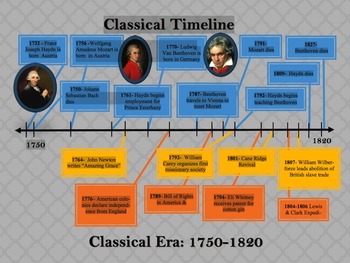Pre Classical Era Of Management Pdf
- Pre Classical Era Of Management Pdf Example
- Classical Era Facts
- Pre Classical Era Of Management Pdf Format
The Classical Era set the scene. It brought us the major civilizations, religions, and trade routes. But, what happens when all of the major world powers collapse? This is the Post-Classical era.
Pre Classical Era Of Management Pdf Example
- Classical Management in the Workplace Introduced in the late 19th century, the classical management approach to business addresses many issues in industrial management. The approach generally focuses on specialization and efficiency. The approach also places an emphasis on higher quality, cost reduction and better management and worker relationships.
- PDF MS Sridhar and others published Schools of Management Thought. 4.5.4 Criticisms on Classical Management Theory. 4.6 Neo-Classical. 'autocratic' or 'authoritarian' or pre-scientific era(i.e., earlier to 1880) of the early period.
Behavioral Management Theory As management research continued in the 20th century, questions began to come up regarding the interactions and motivations of the individual within organizations. Management principles developed during the classical period were simply not useful in dealing with many management situations and could not explain the behavior of individual employees.
The major world powers come from places you might not expect. There are some powers that are similar to the ones before and the ones after (Byzantine, China). But, the major players in the Post-Classical era come from totally backwards places. One sprouts out of a cave in the Arabian desert.
The other comes from the base of a mountain on the steppes in Central Asia. I call this era, Muslims & Mongols. That's not everything, but it just about sums up the basics.
(Of course, Trade, Migrations, Religion, and Labor are important.) The Post Classical Era is the FIRST era that represents 20% of the test. From here on out, these eras are worth more than the first two. Pay attention. Although Afro-Eurasia and the Americas remained separate from one another, this era witnessed a deepening and widening of old and new networks of human interaction within and across regions.
Classical Era Facts

Pre Classical Era Of Management Pdf Format
The results were unprecedented concentrations of wealth and the intensification of cross-cultural exchanges. Innovations in transportation, state policies, and mercantile practices contributed to the expansion and development of commercial networks, which in turn served as conduits for cultural, technological, and biological diffusion within and between various societies.
Pastoral or nomadic groups played a key role in creating and sustaining these networks. Expanding networks fostered greater interregional borrowing, while at the same time sustaining regional diversity. The prophet promoted, a new major monotheistic religion at the start of this period. It spread quickly through practices of trade, warfare, and diffusion characteristic of this period. KC 3.1: A DEEPENING AND WIDENING OF NETWORKS OF HUMAN INTERACTION WITHIN AND ACROSS REGIONS CONTRIBUTED TO CULTURAL, TECHNOLOGICAL, AND BIOLOGICAL DIFFUSION WITHIN AND BETWEEN VARIOUS SOCIETIES.1. Improved transportation technologies and commercial practices led to an increased volume of trade, and expanded the geographical range of existing and newly active trade networks. State formation in this era demonstrated remarkable continuity, innovation and diversity in various regions.
In Afro-Eurasia, some states attempted, with differing degrees of success, to preserve or revive imperial structures, while smaller, less centralized states continued to develop. The expansion of Islam introduced a new concept — the — to Afro-Eurasian statecraft. Pastoral peoples in Eurasia built powerful and distinctive empires that integrated people and institutions from both the pastoral and agrarian worlds. In the Americas, powerful states developed in both Meso-America and the Andean region.I. Empires collapsed in different regions of the world, and in some areas were replaced by new imperial states or political systems.A.
Following the collapse of empires, imperial states were reconstituted in some regions, including the Byzantine Empire and the Chinese dynasties —, and — combining traditional sources of power and legitimacy (, Religion, Land-owning elites) with innovations ( New methods of taxation, Adaptation of Religious Institutions) better suited to the current circumstances. Changes in trade networks resulted from and stimulated increasing productive capacity, with important implications for social and gender structures and environmental processes. Productivity rose in both agriculture and industry. Rising productivity supported population growth and urbanization but also strained environmental resources and at times caused dramatic demographic swings. Shifts in production and the increased volume of trade also stimulated new labor practices, including adaptation of existing patterns of free and coerced labor. Social and gender structures evolved in response to these changes.I. Innovations stimulated agricultural and industrial production in many regions.
Notre Dame is probably the most famous church on earth. From the stained glass to the Flying Buttresses, Notre Dame is an iconic building in the center of Paris. Speaking of Buttresses. Check out those Buttresses.
This was one of the first buildings to use buttresses to displace the weight of the roof outward. Napoleon crowned himself emperor inside. You want relics? How about a piece of the true cross, the crown of thorns, and a nail from the cross? When it comes to cathedrals, this is your best example.